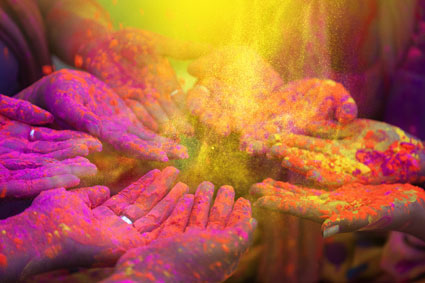Tween and teen bullying has become a problem that has reached alarming levels. While some people claim that teasing, and even bullying, among middle and high school students has always been around, others claim it's gotten worse. Some people would argue that it's gotten much worse, and if we don't as a society begin to do something about it, we are raising a generation of people who will live with the consequences that bullying behavior brings about.
There are a lot of consequences that the nation is facing when it comes to bullying at the middle and high school level. One scan of the weekly news highlights from around the nation will yield stories, most of them somber ones that tell the dark tales of teens and tweens being bullied to the brink.
Take, for example, Rachel Ehmke, Joel Morales, and Whitney Kropp. All three of these people were bullied in their middle and high schools and were pushed to the edge. Rachel, a seventh-grader from Minnesota who had been bullied for a while, hanged herself because she couldn't get the bullying to stop, despite her parents and the school believing that she was working through the bullying issues. Joel, a 12-year-old boy from East Harlem also hanged himself because of the bullying he was enduring at school.
Whitney Kropp's story ends on a happier note. From Michigan, others in her high school would bully her, and they pulled a prank that almost led to her death. As a joke, they voted her to be on the homecoming court for their school. She contemplated suicide over the bullying prank, but her family convinced her instead to take a different route. They, and others in their small community, supported her in standing up to the bullies by taking the honor of participating in that homecoming court at the festivities. She took the role on the homecoming court, made headlines around the nation, and became a role model for standing up to bullying. Her story is a happy one, but most bullying stories do not end on such a happy note.
So what is it that makes tweens and teens engage in bullying behaviors? What makes some kids decide to end their life over the bullying? How do you get a teen like Whitney Kropp to stand up to the bullying and turn it all around? And how do we as a parent, teacher, community, and country, stand up to bullying so that we can protect the youth of our nation? The answers to these questions can be the difference in how bullying is perceived in your community, handled at your school, and may even be the difference in life or death when it comes to the outcome for the bullied victim. We will look at everything from how bullying is defined, to how peer advocacy can be created, and many issues in between.
What is Bullying?
Although bullying is a term that many people are familiar with, they may not know exactly the term includes. According to the National Institutes of Health (NIH), bullying is behavior that takes place when a person or group repeatedly try to harm someone they perceive as being weaker than they are. Bullying may include teasing, hitting, taunting, name calling, excluding someone, and spreading rumors about someone. Bullying can be both physical and verbal.
Decades ago bullying existed, but it was a term that we didn't hear about nearly as much as today. People used to assume, and many still do, that the behaviors included in bullying are just part of growing up, and that they are something that everyone goes through. This idea can be harmful, especially to those who overlook the dangers involved in bullying. Tweens and teens who are bullied may go on to engage in violent behavior, commit suicide, or may go on to have a variety of social problems as they become adults.
The impact of bullying can be far reaching and last a lifetime. Because of this, it is important that it always be taken seriously and addressed immediately. Bullying is a form of abuse. It is emotional abuse and can lead to both physical and mental health issues.
The Bullying Facts
The term bullying has become well known in recent years. This isn't because bullying wasn't taking place a couple of decades ago, because it was. As people have learned how important an issue it is, they have raise the awareness about it, as well as worked on ways to help people prevent and address it. We hear about it more today because we have better and quicker access to the news stories that ring out from around the nation about bullying.
Bullying is happening more than most parents and teachers would care to believe. It's an ongoing problem that is taking place not only on school grounds, but it also happens in neighborhoods, on playgrounds, and even at the local mall or theater. Bullying even takes place when the victim is spending time with family, or napping on the sofa. This is because cyber-bullying has become a major issue.
According to the American Academy of Child & Adolescent Psychiatry, about half of all children are bullied at some point during their school years. The academy also reports that around 10 percent of students are bullied regularly. Additional facts surrounding bullying by the National Association of School Psychologists find that:
- Bullying is the most common form of violence that takes place in our country.
- Of those who have been bullied, two-thirds feel the school responded poorly to the problem.
- They also report that 25 percent of teachers find nothing wrong with bullying or teasing and only end up intervening in around 4 percent of the incidents.
Bullying most commonly happens on school grounds. But there are other places it can happen, as well. It can happen at home (through cyber-bullying), in the neighborhood, on the school bus, or any place where tweens and teens are meeting up. If they are going to the movies, the mall, or to a community function, it can take place. Once there are a number of tweens and teens gathering in one place there is an increased risk that bullying can happen.
Because bullying today takes place beyond the school grounds, it is important that parents and those in the community also be aware of it and know how to prevent it, as well as to address it if it does happen. Cyber-bullying is a growing trend that has taken some of the bullying outside of the school walls and put it in the hands of the victim, wherever they may be.
That being said, the majority of bullying still takes place on school grounds. As such, the National Crime Prevention Council reports that each day in America, there are 160,000 students who miss school because they fear bullying. This is an issue that is impacting our middle and high school students both at school, and when they are at home.
When we think of bullying, many of us tend to think that it's something that only takes place on school grounds. While it may be true that a lot of bullying takes place on school property, it certainly doesn't stop there. Bullying takes place anywhere there is a coming together of kids. When it comes to middle and high school students that can mean that bullying takes place at the skating rink, mall, theater, or any other place where groups of tweens and teens may meet up. Because of this, we need to understand that bullying is much more than a "school" problem. It's a community problem, and one that takes a community to prevent and address.
Beyond the School
A lot of bullying today also takes place in the confines of one's home. That is especially true when it comes to middle and high school students. According to Harris Interactive, around 17 million teens (every four out of five) carry some sort of wireless device. Of those, 57 percent of them report that their mobile phone helps to improve their social life. The problem, and where it relates to bullying, is that these electronic devices have helped to make bullying accessible to people from anywhere.
As we will learn in a later section, cyber-bullying has become a major issue, and is something that generally takes place outside of school. We can continue to look at schools as the end-all, be-all and for the answers on what to do about bullying, but a lot of bullying is taking place outside of the school grounds, making it essential that we take it serious as a community. We also need to employ more preventative measures for community members. When we address bullying in our community, we help to create a better place to live for everyone.
Impacting Communities
Additional ways that bullying impacts communities include:
- Economically. Those teens who are bullied are more likely to quit high school, which will have an economic impact on their lives and the community they live in. They will be less likely to get a good job and be a tax-paying citizen that contributes to society.
- Fear. Some bullying with teens comes in the form of gang activity. This gang activity, which is especially rampant in larger cities, has created fear within the communities. Many adults are afraid of the bullying gangs that exert power over those in the city. The fear of gangs or bullying teens being out on the streets may even make some adults afraid to go out at night, which furthers the economic impact a community feels.
- Quality of life. The one thing that all tweens and teens need in order to thrive, is a safe and secure environment. They cannot reach their full potential if they are always living in fear and afraid to get involved. Bullying brings down the quality of life for all.
- Mental health issues. According to The Jed Foundation, bullying can lead to a variety of mental health issues, including depression, anxiety, substance abuse, and suicide. Each of these mental health issues impact the community.
Tween and teen bullying is an issue that reaches far beyond the school walls. Take, for example, Christina Smith, a 16-year-old girl from St. Charles Parish in Louisiana. She was repeatedly being bullied at her high school to the point where she was beaten up by 10 girls outside of the school property. While some of the teens have been charged with battery, Smith dropped out of high school, fearing for her life. Before dropping out of high school she was enrolled in a program that would have helped provide her with a free college education. Now she is settling for earning her G.E.D. and will likely no longer qualify for the free college program. She based the decision to quit school on the fact that she could no longer face the ongoing bullying and feared for her life, but the long term impact on her and the community is going to be significant.
According to the Bureau of Labor Statistics, those who have less than a high school education make an average of $451 per week and have an unemployment rate of around 14 percent This is the lowest weekly wage and highest unemployment rate of any educational attainment group. Earning an associate degree has an average wage of $768 per week, and an bachelor's degree brings an average earning of around $1,053 per week, and a 4.9 percent unemployment rate.
It is clear that when students drop out of high school because of bullying, the community, and nation, will be impacted. They will be more likely to not make enough money to make ends meet and will have a much more difficult time finding a job in the first place. And that's just when it comes to employment. There are additional issues, such as it leading mental health issues, which will cost society even more, as people try to provide treatment and additional security for issues that may arise as a result.
Everyone's Problem
Bullying is an issue that is everyone's problem. Our middle and high school students are going to soon become the next leaders of our community, and nation. Just imagine what bullying may do to their ability to effectively be leaders. Those who bully, and those who are bullied, will be impacted in negative ways that will have a ripple effect on their families and communities. The more we realize and address bullying as a community problem, rather than an isolated incident at the school down the road, the better off our communities will become.
Ahead we will begin to look at the bullying victim, as well as who it is that bullies, and some of the reasons they may engage in such behaviors.



























